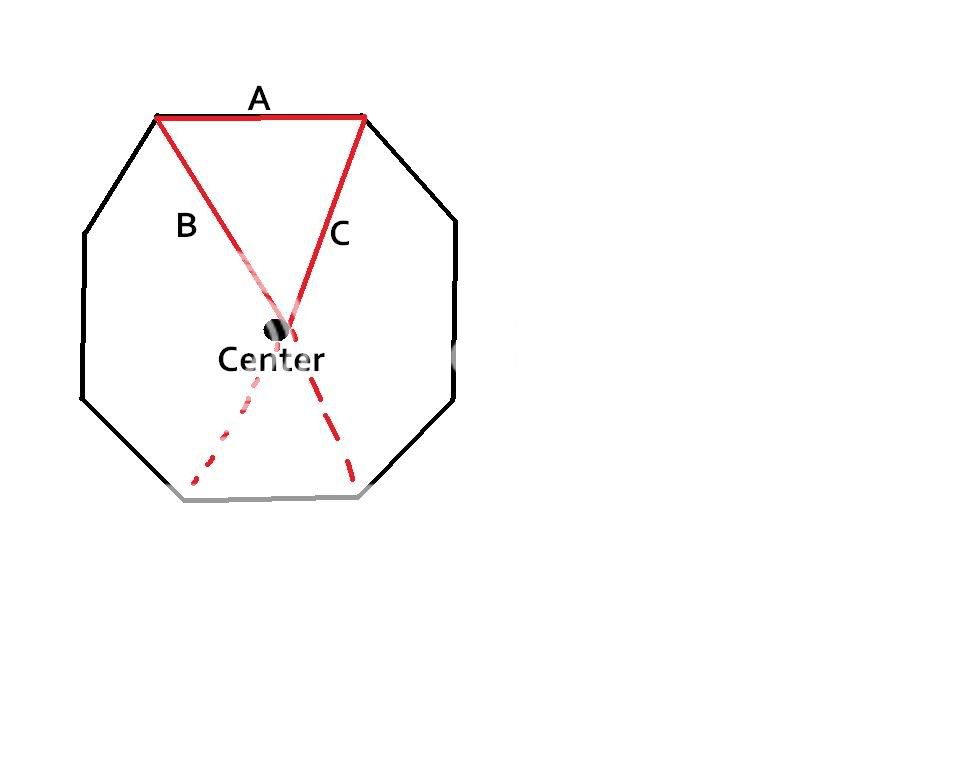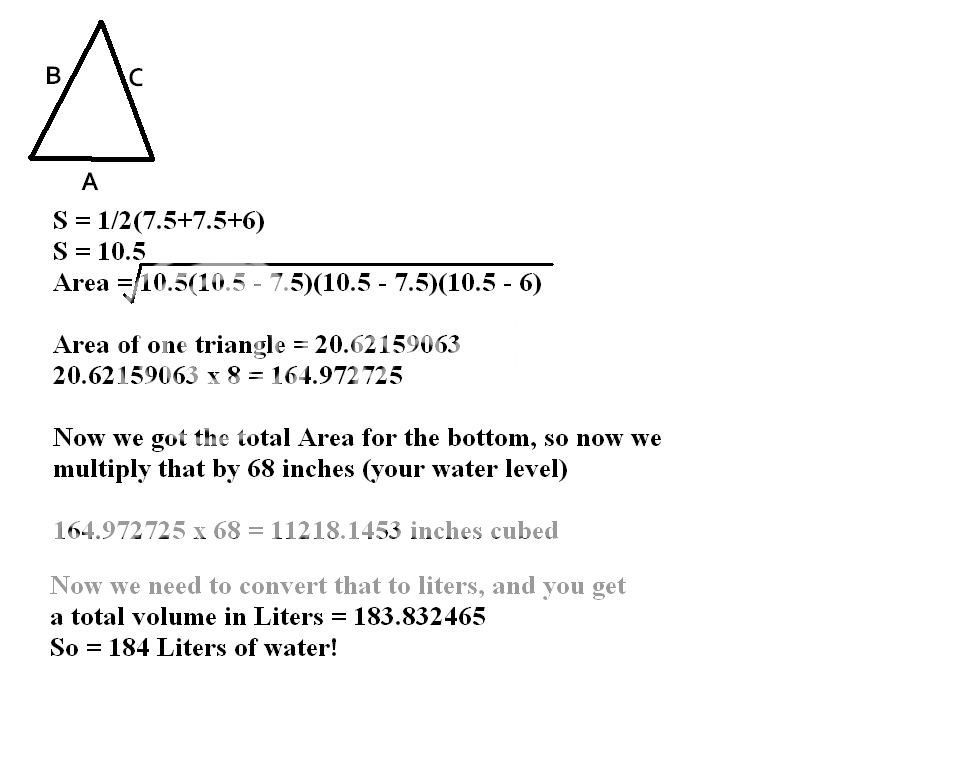Hi.
I have recently acquired a tank which is 14" x 14" x 77" (tower). I am trying to figure out the volume in litres. I've used the volume calculator on this site and with the measurements to the water level, it is working out at 218 litres - however, the tank is octagonal and I'm struggling with the maths to get an exact figure.
Would any of you clever folks be able to help.
Many thanks in advance.
Chris
I have recently acquired a tank which is 14" x 14" x 77" (tower). I am trying to figure out the volume in litres. I've used the volume calculator on this site and with the measurements to the water level, it is working out at 218 litres - however, the tank is octagonal and I'm struggling with the maths to get an exact figure.
Would any of you clever folks be able to help.
Many thanks in advance.
Chris




